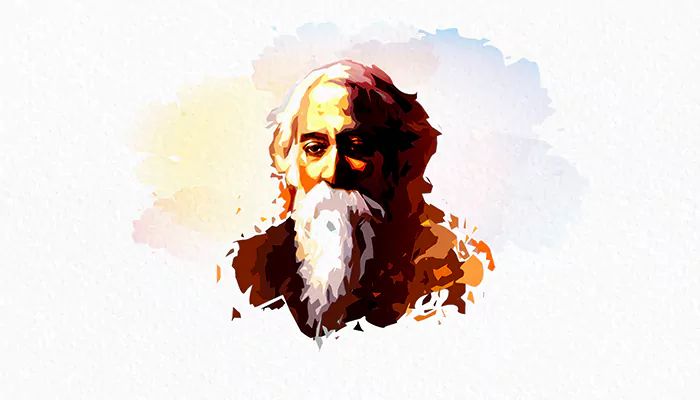Rabindranath Tagore's Global Influence: How His Works Resonate Across Cultures and Continents
- Devyani
- 7 months ago
- 5 minutes read

Rabindranath Tagore: The Bard Whose Words Bridged Worlds – Discover how a poet from Bengal became a global icon, touching hearts from Tokyo to New York with timeless tales of love, freedom, and human connection.
Who Was Rabindranath Tagore?
Imagine a man who wrote poetry so profound it made the world stop and listen. A man who composed songs that became national anthems for two countries. A painter, philosopher, and educator who’s still inspiring millions, a century later. That’s Rabindranath Tagore for you—a Renaissance man from Bengal who became India’s first Nobel laureate (1913, no less!) and left a mark so deep, it’s impossible to ignore. But here’s the kicker: his genius wasn’t confined to India. Nope. Tagore’s ideas danced across borders, languages, and cultures, making him a true global citizen.
The Universal Language of Tagore’s Words
Ever read something that felt like it was written just for you, even if it came from halfway across the globe? That’s Tagore’s magic. His masterpiece, Gitanjali (“Song Offerings”), isn’t just a collection of poems—it’s a heart-to-heart conversation about life, spirituality, and longing. When Irish poet W.B. Yeats first read it, he gushed, “These lyrics… display in their thought a world I have dreamed of all my life.” No wonder Tagore’s Nobel Prize citation called his work “profoundly sensitive, fresh, and beautiful.”
But it’s not all about lofty ideals. Tagore wrote about everyday joys and struggles—love under moonlight, kids chasing butterflies, the ache of loneliness. Whether you’re in Kyoto or Cape Town, his words feel like a warm hug. Translators have taken his works to over 50 languages, proving that a good story doesn’t need a passport.

A Bridge Between East and West
Tagore wasn’t just a writer; he was a cultural diplomat before the term even existed. In the 1920s, he globetrotted—giving lectures in Tokyo, chatting with Einstein in Berlin, and hanging out with poets like Robert Frost in the U.S. He challenged Western stereotypes of Asia as “exotic” or “backward,” arguing instead for a world where cultures learn from each other.
His big dream? A university without walls. In 1921, he founded Visva-Bharati in Santiniketan, a school where kids studied under trees, blending Eastern spirituality with Western science. Students from Japan, Iran, and even America flocked there. Talk about a melting pot!

Education as Liberation – Tagore’s Classroom Without Borders
Tagore hated rigid classrooms. Like, really hated them. He believed schools should nurture curiosity, not crush it. At Santiniketan, kids learned music, art, and farming alongside math and literature. Sounds hipster, right? But his philosophy was radical: education should set you free, not chain you to a desk.
His ideas trickled into modern education reforms worldwide. Ever heard of “experiential learning” or “holistic development”? Tagore was preaching that stuff decades ago. Even UNESCO’s founding principles nod to his vision of education as a tool for peace. Not bad for a guy who dropped out of school at 14!
Inspiring Icons: From Gandhi to… Einstein?!

Tagore’s fan club included some pretty big names. Mahatma Gandhi called him Gurudev (“divine teacher”), though they famously disagreed on nationalism (Tagore was wary of blind patriotism). Meanwhile, in Japan, his essays on environmental harmony influenced the 20th-century “green” movement.
Then there’s that quirky chat with Einstein in 1930. They debated science vs. spirituality over tea, with Tagore quipping, “Truth is realized through humans!” Einstein, ever the physicist, shot back, “Truth exists independently of us.” Different vibes, but mutual respect.
Oh, and let’s not forget the national anthems! India’s Jana Gana Mana and Bangladesh’s Amar Shonar Bangla? Both Tagore originals. Even Sri Lanka’s anthem was composed by his student. Beat that, Shakespeare.
Tagore in 2024: Why He Still Slays
You might think, “Cool history lesson, but what’s he got to do with now?” Plenty. His anti-war poems pop up in peace rallies. His call for “a mind without fear” fuels feminist movements. Artists from Argentina to Korea sample his lyrics in hip-hop and classical fusion.
Social media? Yep. #TagoreQuotes trends yearly on his birthday (May 7th—mark your calendar!). His face graces memes about existential crises and coffee addiction. And thanks to digital archives, a teen in Brazil can read The Home and the World in Portuguese before breakfast.
UNESCO still hosts festivals in his honor. Oh, and that school he started? Visva-Bharati’s now a prestigious university, drawing scholars from 40+ countries. Not too shabby for a 163-year-old!
In a world that often feels divided, Tagore’s legacy is a gentle nudge: our differences are beautiful, but our humanity is universal. So next time you see a sunset or feel a little lost, remember—Tagore’s probably got a poem about that. And chances are, someone, somewhere, is reading it too.











